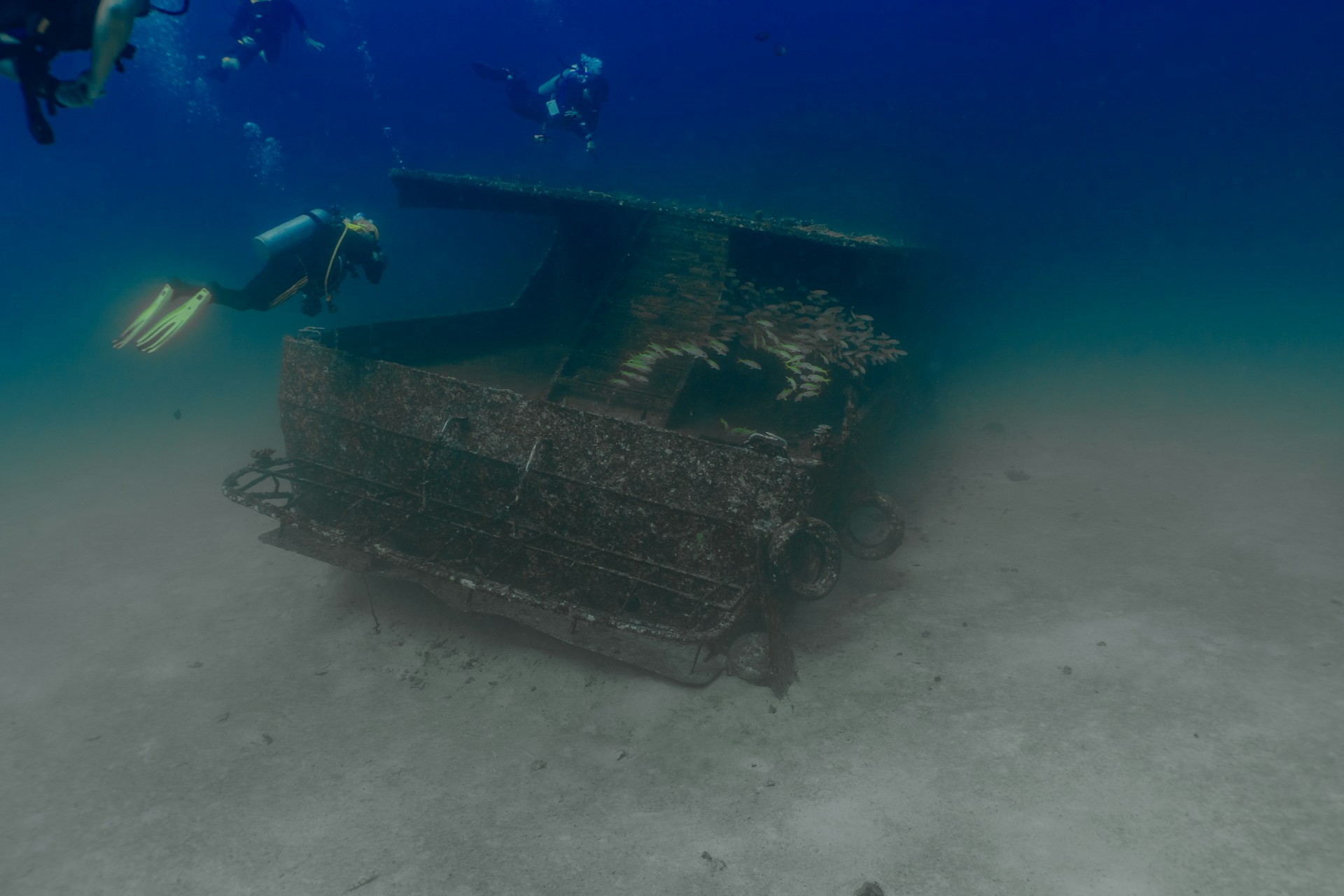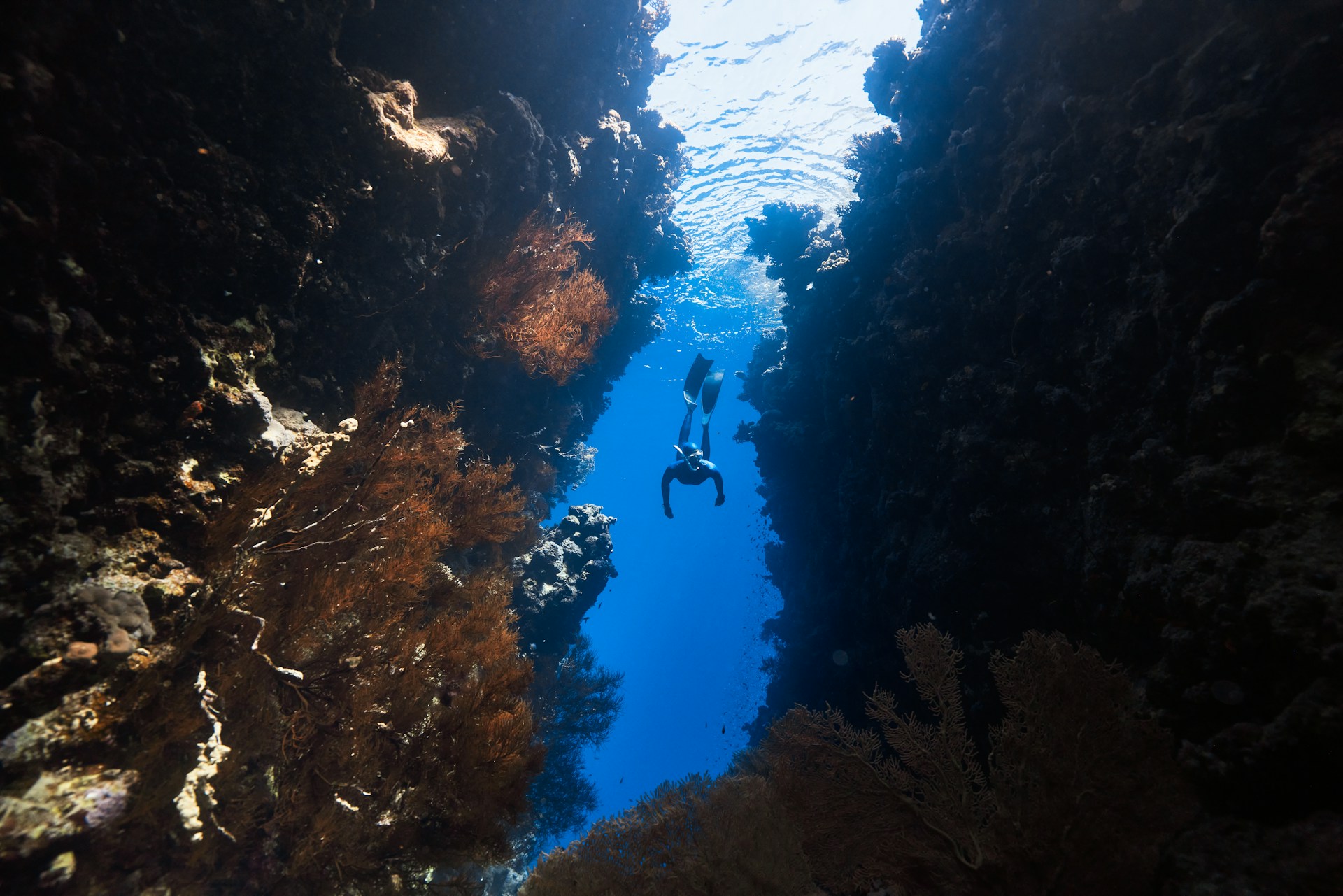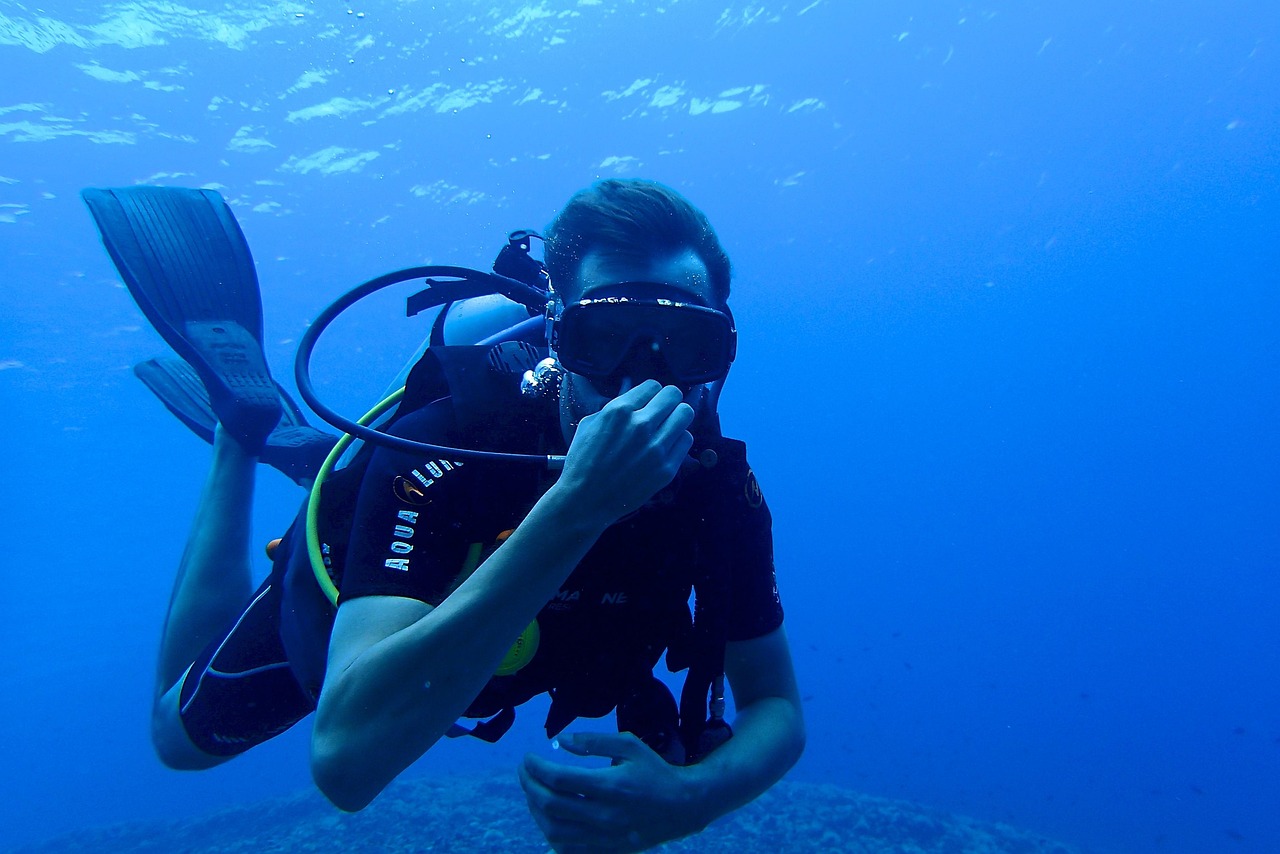In the early 1990s, Pedro Niada—known as “Peter” to his friends—first set foot on the Juan Fernández Archipelago. Captivated by its untouched beauty, he knew he had to return. What started as a vacation quickly became a lifelong journey of passion, discovery, and resilience. There, on the remote Chilean island, he not only found love but also laid the foundation for what would become a 15-year chapter of his life, filled with diving, underwater photography, and the joys of building a life far from the mainland.
Today, Pedro lives in Santiago, where he works in audiovisual production. But the ocean still calls to him, and every chance he gets, he escapes to the coast—never without his diving gear and underwater camera. His weekends are often spent submerged for hours, filming the hidden wonders of the sea.
A Life Shaped by the Sea
Pedro’s connection to the ocean runs deep. His father was also a diver, often exploring the waters in a distinctive black wetsuit with yellow seams and a bright orange interior. It was a model called La Spirotechnique, the same brand worn by divers on Jacques-Yves Cousteau’s legendary ship, the Calypso. Pedro recalls the scent of his father’s gear with vivid clarity—a smell that shaped his earliest memories.
“I was told that as a kid, I wouldn’t go to sleep unless I had my dad’s fins and mask beside me,” he laughs. “Back then, I said I wanted to be a ‘frogman’—that’s what divers were called in those days.”
Despite this early fascination with the sea, Pedro first pursued a career in film and television. He enrolled at the Institute of Arts and Communication Sciences (IACC), where he studied Cinema and TV. Near the end of his studies, at age 22, he took a vacation with friends to Juan Fernández. His father gifted him his old wetsuit for the trip. That visit changed everything.
“I fell in love with the island,” Pedro says.
Building a Life on the Island
After returning briefly to Santiago and working at the iconic Channel 2 Rock and Pop, Pedro couldn’t shake the memory of Juan Fernández. Within a year, he returned—this time not just to visit, but to stay.
On the island, he met Fabiana Persia, a tourist from Mendoza, Argentina. What began as a chance meeting blossomed into a deep relationship. The couple decided to stay, and Pedro’s mother gifted him a professional Nikon underwater film camera—an analog model that used slide film. That single gift brought together his two greatest passions: diving and photography.
Realizing he had found his path, Pedro used his savings to purchase diving equipment: a compressor, four tanks, and weight belts. He and Fabiana boarded a boat headed back to Juan Fernández, planning to stay three months. They ended up living there for 15 years.
During that time, they built a life from the ground up. Together, they opened a dive center and a cozy guesthouse. They had children and created a peaceful, ocean-centered existence. Pedro spent his days exploring the waters, capturing the magic of marine life through his lens, and sharing the island’s hidden treasures with visitors from around the world.
A Painful Goodbye and a New Chapter
Despite their idyllic life, circumstances eventually forced Pedro and his family to leave the island. It was a difficult, even traumatic transition. “It felt like I was torn away from a dream,” he says.
Back on the mainland, Pedro struggled at first, but he soon found a way to reconnect with his old passions. He began working in nature documentaries, combining his filmmaking skills with his diving experience. Over the years, his projects have taken him across Chile and Latin America, filming pristine underwater ecosystems and supporting international productions.
For Pedro, each dive is more than just a job—it’s a way of staying connected to his roots. “Filming underwater is a form of training,” he explains. “It’s discipline. It’s an exercise you have to keep up.”
Still Chasing the Sea
Our conversation takes place on a Monday afternoon. Just hours earlier, Pedro had returned from a weekend dive trip to Pichidangui, a coastal town north of Santiago. There, he reconnected with Argentine friends from Mendoza and finally shared the barbecue they’d long planned. “That weekend’s dives were some of the best I’ve had in a while,” he says.
He shows me a photo from the trip: there he is, fresh out of the water, camera in hand, sitting in a boat surrounded by friends. His face lights up with a wide smile beneath his now signature white beard.
Even after three decades, Pedro’s excitement for the sea hasn’t faded. Whether submerged in the Pacific or behind a camera lens, his journey continues—one dive, one frame, one story at a time.



